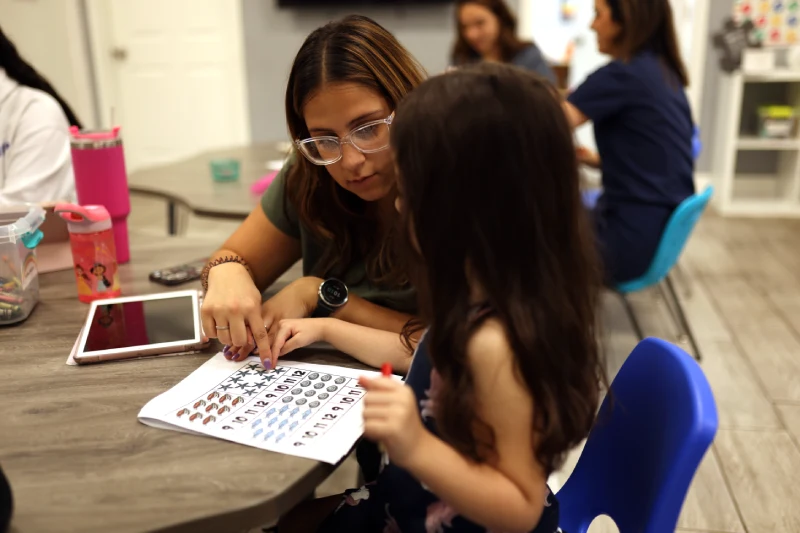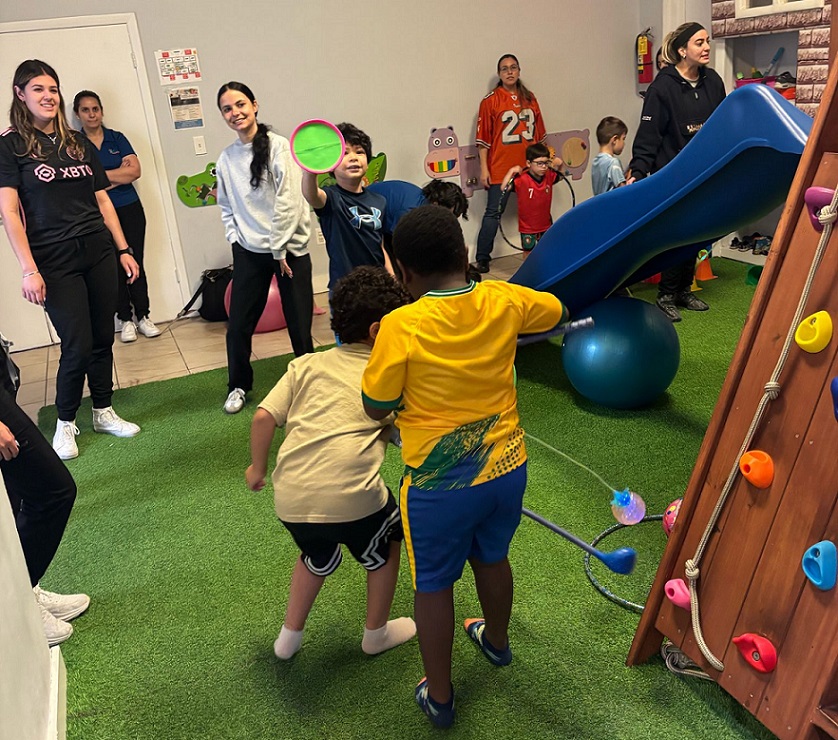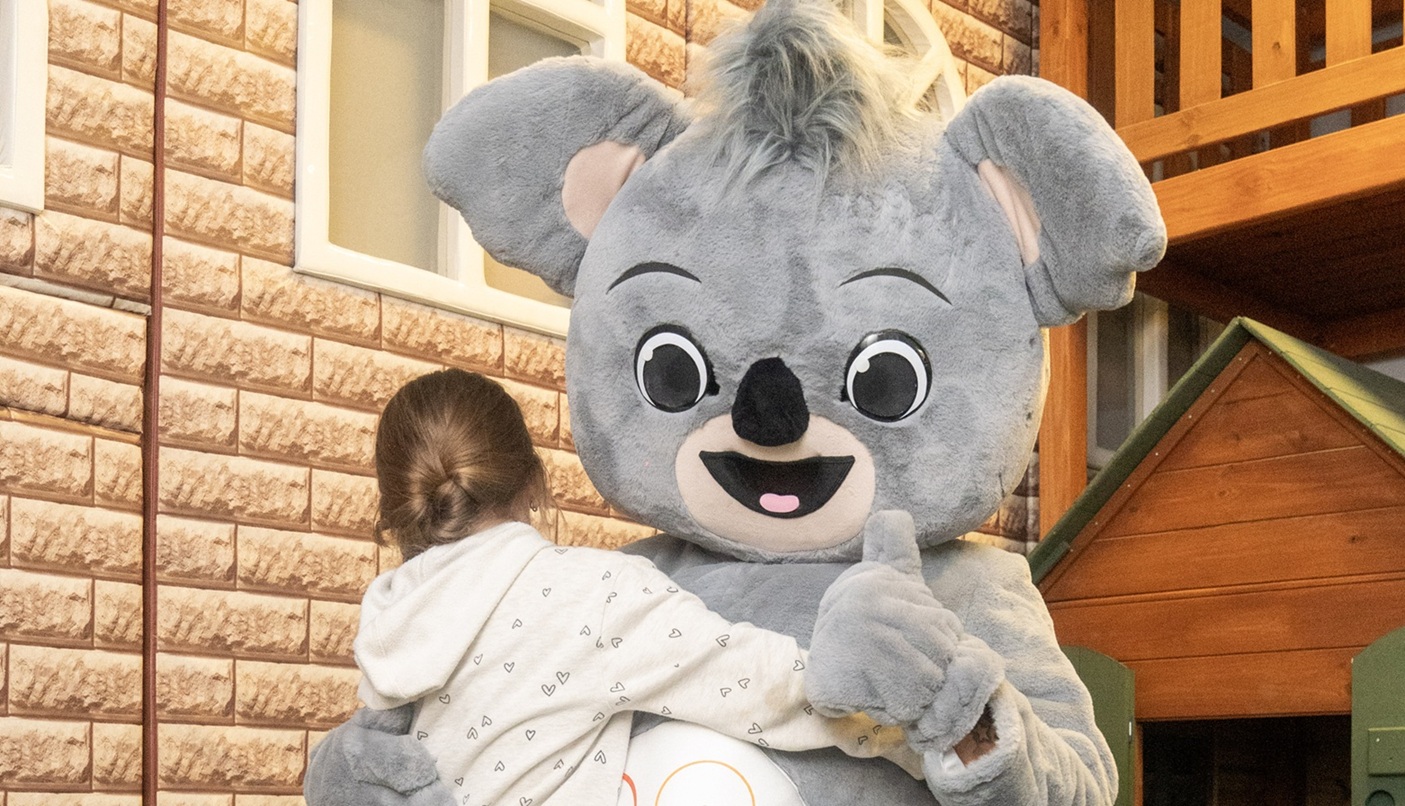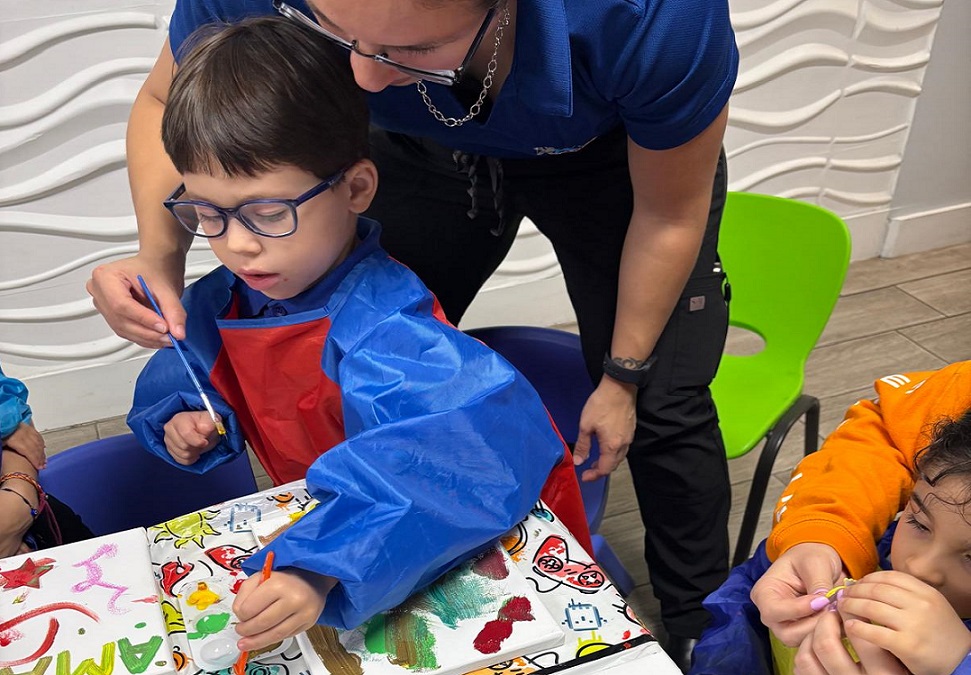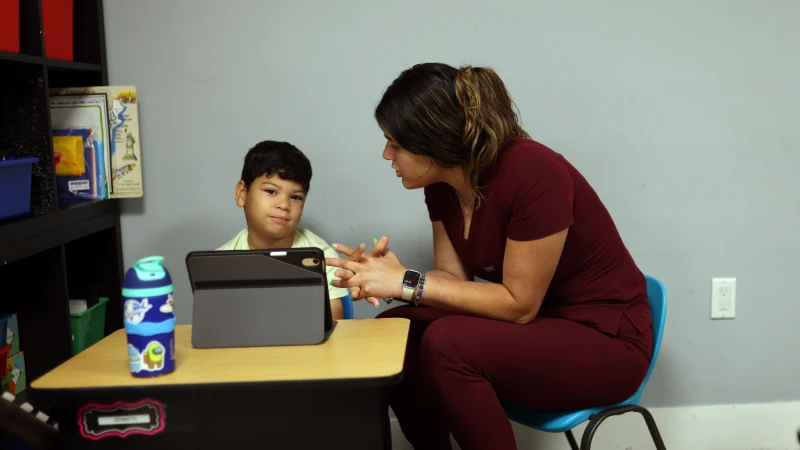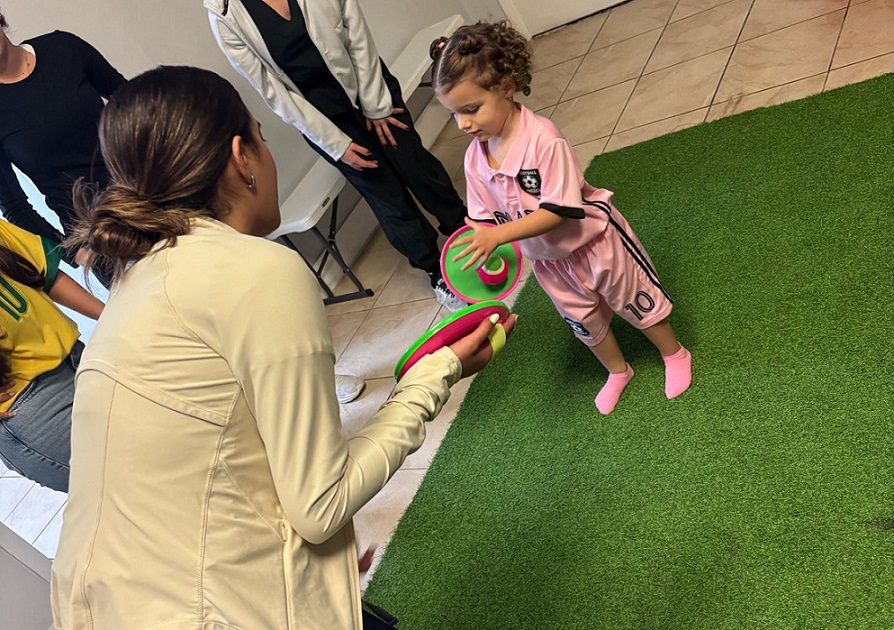Communication is the cornerstone of connection, enabling us to share thoughts, feelings, and needs. While spoken language often takes center stage, nonverbal communication—gestures, facial expressions, eye contact, and tone—plays an equally crucial role. For children with nonverbal autism, these forms of expression carry even greater importance.
About 30% of autistic individuals are nonspeaking or minimally speaking. It’s not just the absence of speech; nonverbal cues often manifest in distinct and individualized ways. However, this doesn’t mean a lack of thoughts, emotions, or personality. Instead, it’s an invitation to explore new pathways of connection and understanding.
What is Nonverbal Communication?
Nonverbal communication refers to the exchange of information without spoken words. It includes gestures, facial expressions, body language, and even the tone or rhythm of vocalizations. For example, a smile can express warmth, while crossed arms may indicate defensiveness.
Autistic children often face unique challenges with traditional forms of nonverbal communication, such as maintaining eye contact, interpreting facial expressions, or using gestures in typical ways. However, many develop alternative ways to express themselves, including pointing, guiding, or using creative methods that resonate with their strengths.
By recognizing and embracing these differences, you can build a deeper and more meaningful connection with your child.
Identifying Nonverbal Autism in Children: Symptoms
How can you tell if your child might be nonverbal? Research shows that signs of communication delays often appear early. Around 30–38% of parents notice symptoms before their child’s first birthday, and by 24 months, more than 80% recognize significant communication challenges.
Common Indicators of Nonverbal Autism are:
- Limited or No Spoken Language: Your child may use sounds, gestures, or actions instead of words.
- Difficulty with Imitation: Struggles to mimic words, facial expressions, or gestures.
- Reliance on Alternative Communication: Prefers pointing, pulling, or guiding to express needs.
- Minimal Response to Verbal Cues: May not respond consistently to their name or spoken instructions.
If you notice these signs, consulting a speech therapist or developmental specialist is an important first step. These professionals can assess your child’s needs and recommend appropriate interventions.
How to Get a Diagnosis
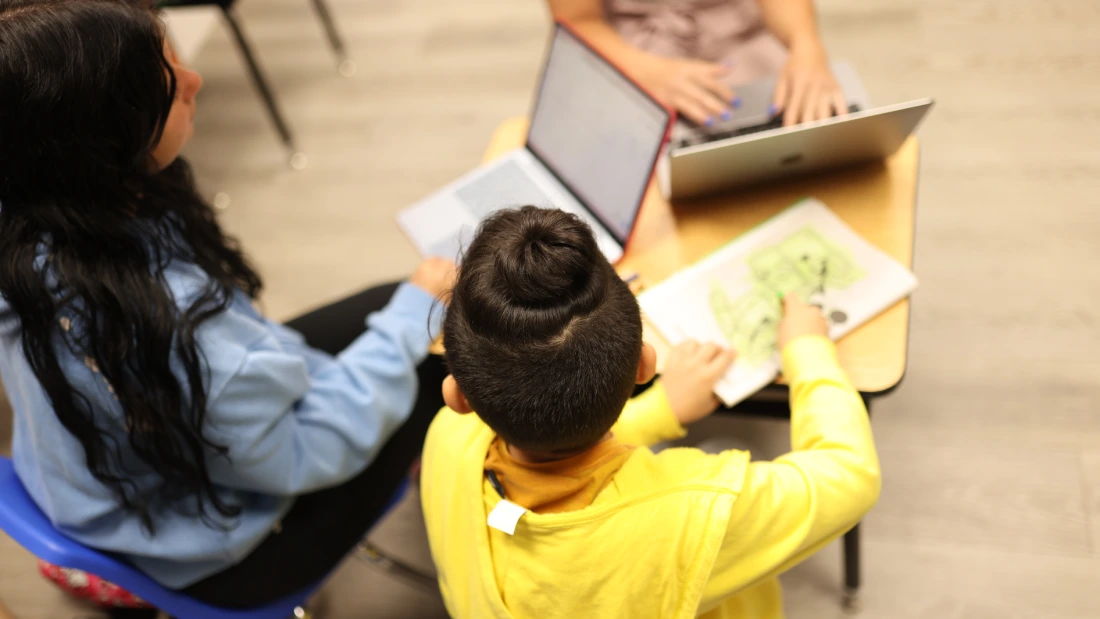
Diagnosing nonverbal autism involves evaluating your child’s language and speech development. Tools like standardized vocabulary checklists can identify delays in children aged 18–35 months by analyzing word usage and combinations. Nonverbal Autism Diagnosis usually occurs in a Level 3 Autism diagnosis.
However, it can be complex due to overlapping communication difficulties across developmental disorders. Once a diagnosis is confirmed, therapists will use specialized assessments to determine the extent of delays and create a personalized intervention plan for your child.
Understanding Communication Challenges in Nonverbal Autistic Children
Nonverbal autism does not equate to a lack of intelligence, thought, or emotion. Children with nonverbal autism have vibrant inner worlds filled with ideas and feelings, even if they cannot express them verbally.
Alternative Communication Methods:
- Visual Aids: Picture boards or schedules help children express preferences and anticipate activities.
- Sign Language: Simple gestures can provide a clear way to communicate needs.
- Augmentative and Alternative Communication (AAC): Tools like tablets with specialized apps or voice-generating devices allow effective communication.
Supporting your child’s unique communication style requires patience, creativity, and a willingness to adapt. With the right methods, you can foster meaningful connections and help your child express themselves.
Therapeutic Approaches: ABA and Speech Therapy for kids with Nonverbal Autism
Interventions like Applied Behavior Analysis (ABA) and speech therapy are instrumental in helping nonverbal autistic children develop communication skills.
ABA Therapy
ABA therapy focuses on analyzing and improving specific behaviors, including communication. Individualized and structured sessions help children:
- Use gestures, such as pointing, to express needs.
- Identify and utilize pictures to communicate.
- Operate communication devices to share thoughts.
By reinforcing positive behaviors, ABA builds a foundation for effective communication.
Speech Therapy
Speech therapy for kids with autism encompasses verbal and nonverbal communication. Techniques include:
- Picture Exchange Communication Systems (PECS): Using pictures to express preferences.
- Assistive Technology: Devices like iPads enable children to convey messages.
- Sign Language and Gestures: Introducing simple signals for basic needs.
- Oral-Motor Exercises: Strengthening muscles to improve articulation.
At Koala ABA and Learning Center, speech therapy is tailored to each child’s developmental stage and unique challenges. The goal is to empower children with tools to express themselves, whether through words or alternative methods.
Effective Nonverbal Communication Techniques for Parents
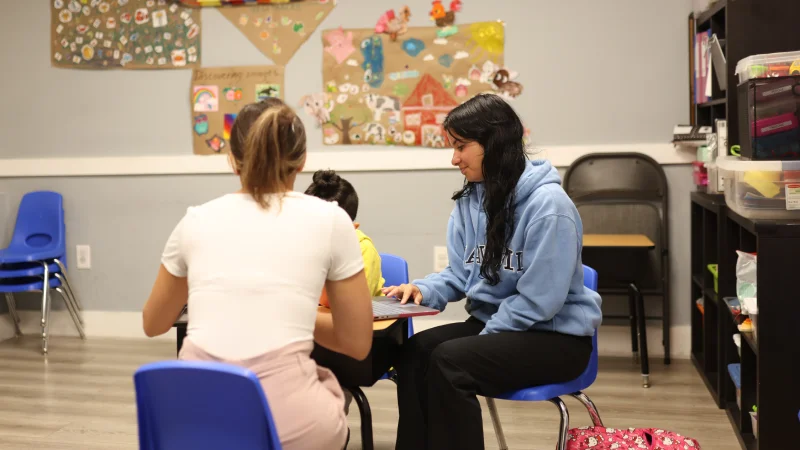
As a parent, you play an essential role in your child’s communication development. Incorporate these practical strategies into your daily routine to strengthen your bond:
1. Be Observant
Pay attention to body language such as reaching, leaning, or pointing, facial expressions, and vocalizations.
2. Use Visual Supports
- Visual Schedules: Help your child anticipate daily activities.
- Picture Cards: Enable them to express choices and preferences.
3. Simplify Your Speech
Use short, clear phrases paired with gestures or pictures. For example, instead of saying, “Would you like the car, train, or something else?” try:
“Car or train?” while pointing to the options.
4. Encourage Interaction Through Play
- Building Blocks: Practice turn-taking with phrases like, “Your turn” and “My turn.”
- Pretend Play: Model communication using toys or scenarios.
- Puzzles: Help your child request pieces using gestures or pictures.
5. Model Communication
- Gestures and Sign Language: Wave or point while speaking.
- AAC Tools: Show how to use devices to make choices.
6. Be Patient and Celebrate Progress
Every step forward, no matter how small, is a milestone. Positive reinforcement builds confidence and encourages continued growth.
Finding Professional Support: Koala ABA and Learning Center
At Koala ABA and Learning Center, we specialize in helping children with autism develop communication skills. Our personalized programs address unique challenges with goals such as:
- Strengthening oral-motor skills for articulation.
- Associating emotions with facial expressions for better social understanding.
- Teaching alternative communication methods, including PECS and AAC tools.
Our expert therapists are dedicated to unlocking your child’s potential and helping them connect with the world.
Ready to take the next step?
Contact Koala ABA and Learning Center today to learn how we can support your child’s communication journey. Together, we can transform challenges into opportunities and open new doors for connection.



